When it comes to advertising in a highly competitive market like Australia, one size certainly doesn’t fit all. You need a strategy that’s tailored to meet the unique needs of your audience, and that’s where Google Ads in-market audiences can be a game-changer.
This in-depth article aims to answer essential questions about in-market audiences and how to optimise Google Ads to boost conversion rates by focusing on audience targeting in Australia. Let’s take a closer look:
What are In-Market Audiences in Google Ads?
In-market audiences are groups of potential customers who are actively considering buying a product or service like yours. These are individuals who are in the decision-making stage, actively researching or comparing options. Google identifies these individuals based on their search queries, clicks, page views, and other online behaviour. By leveraging in-market audiences, you can position your ads in front of consumers who are most likely to convert, thereby boosting conversion rates significantly.
How Do I Optimise Google Ads for Conversions?
Optimising Google Ads for conversions is not just a set-it-and-forget-it process. It requires a well thought out strategy, especially when your target audience is as diverse as Australia’s. Here’s a more detailed look at each step in the process:
Keyword Research
Relevance: The first step in optimising Google Ads for conversions starts with keyword research. Choose keywords that are not only relevant to your product or service but also are terms that potential customers are likely to use when searching.
Search Volume: Use Google Keyword Planner or other third-party tools to identify the search volumes of your selected keywords. Higher search volume generally means more potential traffic but often comes with higher competition.
Competitor Analysis: Look at what keywords your competitors are ranking for. Tools like SEMrush or Ahrefs can provide valuable insights into this.
Long-tail Keywords: Don’t ignore long-tail keywords. These are often less competitive and more targeted, leading to higher conversion rates.
Ad Copy and Call To Action
Captivating Headlines: Your headline should grab attention and make the user want to learn more.
Relevance and Value: The ad copy should be directly related to the keywords you’re targeting and should communicate the value your product or service brings.
Strong CTA: Your Call-To-Action (CTA) should be clear, concise, and compelling, nudging the viewer to take immediate action. For example, instead of just saying “Learn More”, you could say “Grab Your Free Trial Today!”
Landing Page Experience
Message Match: The message on your landing page should match the promise made in the ad copy. A mismatch can lead to poor user experience and low conversion rates.
Page Speed: Slow landing pages kill conversions. Make sure your landing pages load quickly to keep users engaged.
Optimised Design: The design should be clean, and the CTA should stand out. Every element should aim to move the user closer to conversion.
Localisation: Given that you’re targeting an Australian audience, make sure your landing page is tailored to local tastes, language nuances, and even jargon.
Bid Strategy
Target CPA: If you have a specific cost per acquisition (CPA) in mind, use the Target CPA bidding strategy to optimise for conversions at a specific price point.
Target ROAS: If your focus is on the return on ad spend (ROAS), choose the Target ROAS strategy to auto-bid based on the return you aim to achieve.
Manual Bidding: Although riskier and more time-consuming, manual bidding gives you full control and allows you to adjust bids for each campaign, ad group, or even keyword.
Test and Refine
A/B Testing: Run A/B tests to compare different versions of your ads or landing pages. The goal is to isolate variables that could affect conversions, such as headlines, images, or CTAs.
Ad Extensions: Use ad extensions to provide additional information like contact details, additional links, or even sale promotions. These can increase the click-through rate and provide more opportunities for conversion.
Performance Metrics: Continuously monitor metrics like click-through rates (CTR), conversion rates, quality score, and CPA. Use this data to make informed decisions and refine your strategy further.
As you can see, optimising your Google Ads for higher conversions doesn’t end at the Google Ads themselves, but rather takes into consideration the role that every touchpoint plays in the overall conversion optimisation process, from the landing page itself to the call to action that you use.
Targeting in-market audiences is just one strategy that can be used as a part of an overall marketing campaign to grow your return on investment while reaching the right customers at the right moment in the sales funnel.
What is an Example of an In-Market Audience?
Let’s say you operate a travel agency in Australia specialising in luxury cruises. An example of an in-market audience for your business could be individuals who have recently conducted Google searches for terms like “best luxury cruises 2023,” “top cruise destinations,” or have visited web pages about high-end travel packages, cruise reviews, and related content. These actions indicate that the individual is actively looking into taking a luxury cruise and is thus considered “in-market.”
Why In-Market Audience Targeting Matters
Considering that this person is very likely to convert, it makes sense that you’d want to focus a great deal of your efforts on in-market audiences. Here’s why that matters:
Higher Conversion Rates: Using the above as our example, in-market audiences are already interested in luxury cruises, meaning they are more likely to take action if they see an ad from your travel agency. The chances of them booking a cruise package are significantly higher than those of a general audience, who may not have a current interest in cruises.
Cost-Effectiveness: Since these individuals are more likely to convert, your ad spend targeting them will yield a higher ROI. This can make your advertising budget go further, allowing you to reallocate funds to other essential business operations or additional marketing opportunities.
Enhanced Engagement: This audience is more likely to engage with your ad by clicking on it, visiting your website, and even sharing your content. Their higher level of engagement not only boosts immediate sales opportunities but also has long-term benefits like increased brand loyalty and word-of-mouth marketing.
Tailored Messaging: Knowing that your audience is specifically interested in “luxury cruises” allows you to tailor your ad’s messaging to meet their needs more directly. For example, you can highlight special amenities, exclusive destinations, or premium customer service that your agency offers, making your ad even more appealing to this audience.
Faster Sales Cycle: Since these individuals are already in the decision-making phase, the time from the initial ad impression to the final conversion is often shorter. This quickened sales cycle can be crucial for industries with time-sensitive offers or seasonal services.

As you can see, targeting in-market audiences gives you a much greater return on investment while letting you be more specific in your messaging and shortening the customer journey considerably. With that being said, however, it’s understandable to still have questions about the process.
When an Advertiser Chooses to Target Display Ads to In-Market Audiences, What is This Referring To?
When you opt to target display ads to in-market audiences, you’re essentially directing your display advertisements towards users who are in the ‘consideration’ phase of the buying process. This is highly beneficial because these individuals have already shown interest in a product or service similar to yours. They may have visited related websites, engaged with similar content, or even added related products to an online shopping cart without completing the purchase.
Suppose you are an advertiser for a car dealership based in Sydney, Australia. You decide to target display ads to in-market audiences who are actively looking to purchase a new car. What this refers to is, for example:
Audience Identification: Google identifies users who have shown a strong intent to purchase a new car based on their recent search queries (e.g., “best new cars 2023,” “car loan rates,” etc.), page visits to car review sites, and other online behaviours. These users form your “in-market” audience.
Ad Placement: When you target this in-market audience, your display ads will appear on websites, apps, and even in online videos that these potential customers are using. The ad could show up on a car review site, a financial blog talking about how to finance a car, or a YouTube video comparing the latest car models.
Focused Messaging: Knowing that these users are already considering purchasing a new car allows you to create more focused ad content. For instance, you might display an ad about a limited-time promotion for trade-ins, a new model launch, or a zero-percent financing offer.
Relevance: Because you’re reaching users who have already indicated an interest in buying a car, your ad is far more relevant to them than a generic car advertisement would be to the general populace.
Immediate Action: Given these users are already actively researching and considering options, they are more likely to click on your ad and take immediate action, such as filling out a contact form, making an inquiry, or even visiting your dealership for a test drive.
Geographical Relevance: Since you’re operating in Sydney, you can also add a geographical layer to your in-market audience targeting. This ensures that your ads are shown primarily to those who are both in the market for a new car and are located within a reasonable distance of your dealership, making it even more likely that they’ll convert into an actual sale.
Targeting in-market audiences with campaigns that are relevant, not just geographically but also demographically and psychographically helps ensure that your offer is more likely to convert than just throwing a bunch of ads at the wall and hoping some of them stick. It also allows you to reach customers when they’re most likely to buy, boosting conversion rates.

The Bottom Line on Targeting In-Market Audiences
Australia is a market rich in opportunity, but it also comes with its unique challenges. By leveraging Google Ads in-market audiences, you not only reach consumers who are in a ready-to-buy stage but also maximise your chances of boosting conversion rates. Coupled with an optimised ad strategy, in-market audiences provide a targeted, effective, and efficient way to achieve your business goals in this diverse market.
By understanding and leveraging in-market audiences in Google Ads, Australian businesses can create more effective, targeted campaigns. So the next time you’re setting up a campaign, don’t just focus on broad metrics; dig deeper and target display ads to in-market audiences who are most likely to convert. This targeted approach will put your advertising dollars to better use and help you succeed in the competitive Australian market.
Your Next Steps
Be sure to check out our detailed guides on Google Ads Audience Targeting and Demographic Targeting to take your Google Ads optimisation even further. Our comprehensive guide to Keyword Research will also help you pinpoint the best possible keywords for your Google Ads campaign and help you move forward with launching your campaign with confidence.
Not sure where to start? Reach out to our Adelaide Google Ads agency for a free consultation today!




